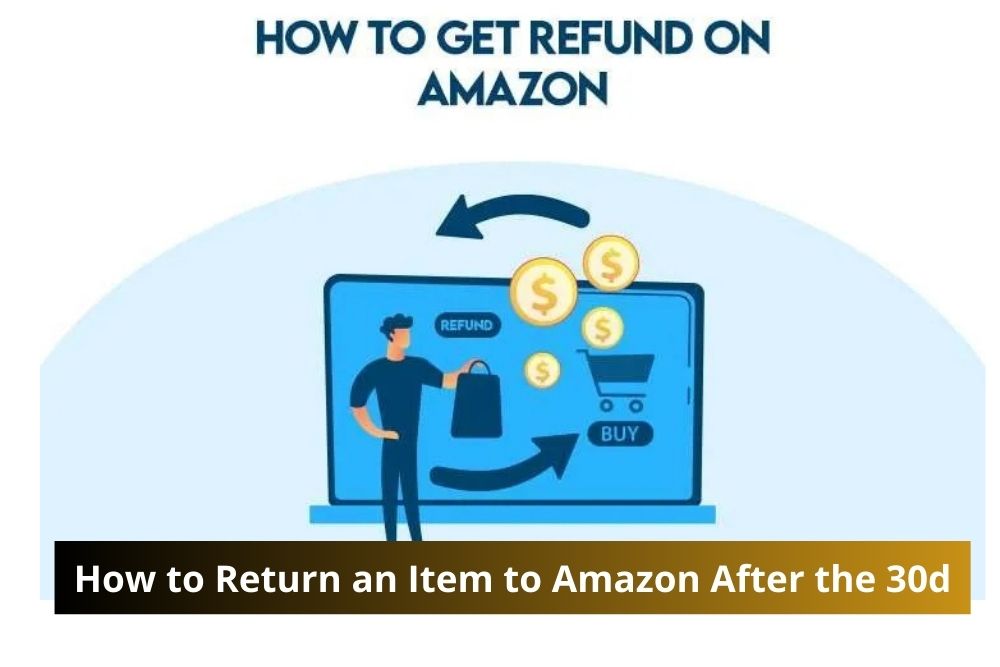How to Return an Item to Amazon After the 30-Day Policy Has Expired

Returning an item to Amazon is usually a straightforward process, as the company is known for its customer-friendly return policy. However, what happens when the 30-day return window has expired? Many customers find themselves unsure of their options after this deadline has passed. In this comprehensive guide, we will walk you through the steps to successfully return an item to Amazon after the 30-day policy has expired, including tips on how to increase your chances of getting a refund or exchange.
Understanding Amazon’s Return Policy
Amazon’s standard return policy allows customers to return most items within 30 days of receipt for a full refund. However, once this period expires, the process becomes more complex. It’s important to note that while the 30-day window is the standard, there are exceptions based on the type of item, the seller, and specific circumstances. Understanding these nuances is crucial when attempting a return after the official window has closed.
Exceptions to the 30-Day Rule
Before you proceed, it’s essential to check if your item falls under an exception to the 30-day return policy. Certain items, such as electronics, may have a longer return period, especially if they come with warranties. Additionally, items sold by third-party sellers on Amazon Marketplace may have different return policies, which could be more lenient or stringent than Amazon’s standard policy.
Steps to Return an Item After the 30-Day Window
1. Review the Item’s Return Eligibility
The first step in returning an item after the 30-day window is to determine whether your item is still eligible for return. Log into your Amazon account, navigate to “Your Orders,” and select the item you wish to return. If the return option is still available, you may proceed with the return process as usual. However, if the option is not available, you will need to explore alternative methods.
2. Contact Amazon Customer Service
If the item is no longer eligible for return via the standard process, your next step should be to contact Amazon’s customer service. Amazon’s customer service representatives have the discretion to make exceptions to the 30-day policy, especially if there are extenuating circumstances such as defects, incorrect items, or other issues beyond your control.
When contacting customer service, be polite and provide a clear explanation of why you need to return the item. Be honest about the situation and emphasize any issues with the product that justify a return. For example, if the item is defective, malfunctioning, or not as described, Amazon is more likely to grant an exception.
3. Be Prepared to Provide Documentation
In some cases, Amazon may request additional information or documentation to process your return. This could include photos of the defective item, receipts, or other proof of purchase. Having this information ready can expedite the process and increase your chances of a successful return.
4. Explore Third-Party Seller Policies
If your item was purchased from a third-party seller on Amazon Marketplace, you will need to review the seller’s return policy. Each seller sets their own return guidelines, and some may be more flexible than Amazon’s standard policy. Contact the seller directly through Amazon’s messaging system to inquire about the possibility of a return or exchange after the 30-day period. Be sure to explain your situation clearly and provide any necessary documentation.
5. Consider an Exchange Instead of a Return
In some cases, Amazon may be more willing to offer an exchange rather than a full refund after the 30-day period has expired. If the item is defective or not functioning as expected, requesting an exchange for the same or similar product might be a more viable option. This approach can be particularly effective when dealing with electronics or other high-value items.
6. Utilize Manufacturer Warranties
If the item you purchased comes with a manufacturer’s warranty, you may be able to return or exchange it through the manufacturer instead of Amazon. Most warranties cover defects or malfunctions that occur after the purchase, often for a period of one year or more. Contact the manufacturer directly to inquire about the warranty coverage and the process for returning or exchanging the item.
7. Leverage Amazon’s A-to-Z Guarantee
For items purchased from third-party sellers, Amazon offers an A-to-Z Guarantee, which protects customers when items are not as described, defective, or never arrive. If the seller is uncooperative or refuses to accept a return after 30 days, you can file a claim under the A-to-Z Guarantee. Amazon will review the claim and may issue a refund if your situation meets the criteria.
8. Request a Partial Refund
If a full return is not possible, another option is to request a partial refund from Amazon or the seller. This approach may be useful if the item is slightly defective or has minor issues that do not justify a full return. A partial refund can be a reasonable compromise that compensates you for the inconvenience while allowing you to keep the item.
Tips to Increase Your Chances of a Successful Return
1. Act Quickly
Even if the 30-day window has passed, it’s essential to act as soon as possible. The sooner you contact Amazon or the seller, the better your chances of securing a return or refund. Delaying the process could further reduce your chances of success.
2. Be Polite and Professional
When dealing with customer service or sellers, always maintain a polite and professional tone. Being courteous can go a long way in getting the help you need. Remember that the person on the other end is more likely to assist you if you are respectful and understanding.
3. Keep Records of All Communications
Document all your interactions with Amazon or the seller, including emails, chat logs, and any other correspondence. This documentation can be crucial if you need to escalate the issue or if there is a dispute regarding your return request.
4. Know Your Rights
Familiarize yourself with consumer protection laws in your country. In some regions, consumer rights laws may provide additional protection for returns and refunds, even after the seller’s return window has closed. Understanding your rights can give you leverage when negotiating a return.
Final Thoughts
Returning an item to Amazon after the 30-day policy has expired can be challenging, but it is not impossible. By following the steps outlined above and being persistent, you can increase your chances of a successful return or refund. Whether through customer service, third-party sellers, or manufacturer warranties, there are multiple avenues to explore even after the return window has closed.



